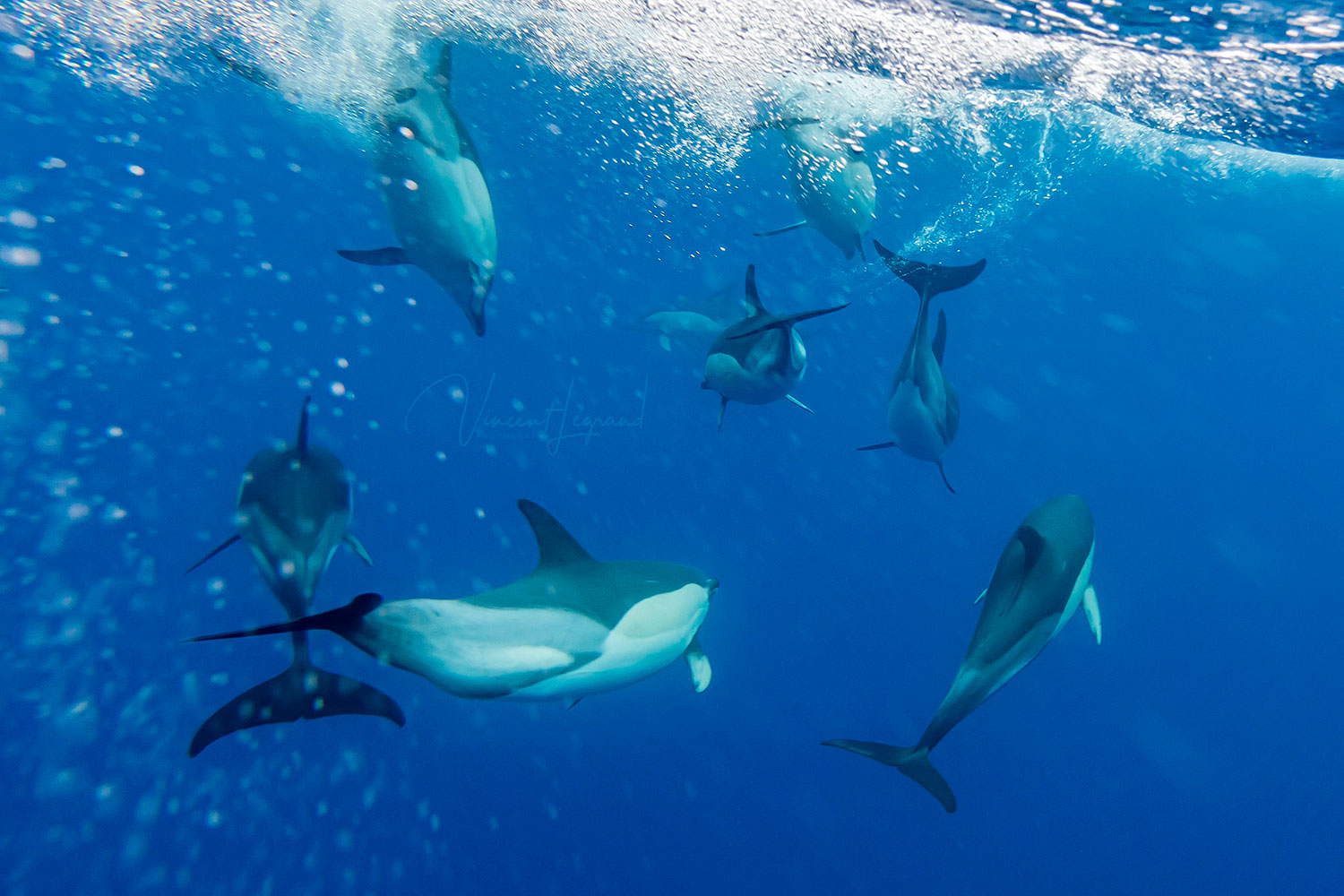
Dolphin identification in Azores
Hello,
I’m just back from a wildlife trip that I was leading in Azores last week (June 29th – July 6th). I’m actually working on my pictures and during the selection of underwater pictures, I was stopped by this unusual species who doesn’t fit at all to Short-beaked Common Dolphin… This specimen was among a megapod of about 200+ common dolphins just off Terceira (around 9km from the coast just over a seamount). Attracted by a group of Cory’s Shearwater we decide to stays around and few seconds later we found the ‘bait ball’. Trying to collect some underwater shots I shooted all ‘dolphin’ crossing my road and this dolphin is a part of them.
The structure is interesting, in some pictures we can see the difference of structure even from the below. Dorsal fin and head shape are strongly distinctive as well as the pattern of the back, it lack the 8-shape of Common Dolphin. The beak doesn’t have any white on tip. Is any of you have any experience with the Clymene Dolphin? Or hybridation inter-dolphin? I’m quite lost if it is something else than Clymene.
Thanks in advance
4 Comments
-
Pierre Fauvé
Hello !
I agree. It does look like a Common Dolphin D. delphis with important variation in color pattern. Such variations are very common in this species. A hybrid is indeed possible but unlikely (such hybrids are documented in captivity but not in the wild).
Clymene Dolphins S. clymene are an Atlantic tropical species, never recorded in the Azores, even if a vagrant is always possible. The shape of this individual does not match, notably the head and rostrum, and the images you took are excellent so there is little room for confusion.
NB : there is now only one species of Common Dolphin retained, with at least 4 subspecies, except for a pending possible new species in the NE Pacific. Previous D. capensis was in fact polyphyletic and it appears the length and shape of the beak is a convergent character related to ecotypes.
Leave a Reply
You must be logged in to post a comment.


Vladimir Dinets
Common dolphins are very variable. Clymene are also variable, but I don’t see anything in the photos that looks like Clymene. To begin with, it’s much smaller than common dolphin.
A hybrid is possible, but with what? Atlantic white-sided? Such a hybrid has never been recorded, but not impossible.
My theory would be a common dolphin from a phenotypically distinct population elsewhere in the Atlantic. A good place to ask would be marmam listserve, https://lists.uvic.ca/mailman/listinfo/marmam